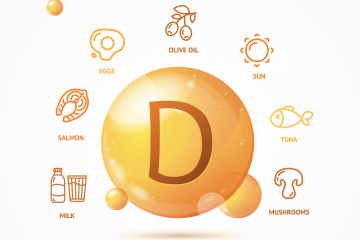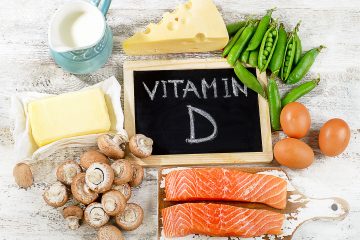Girl Dinners: Simplicity at Its Best or Disordered Eating?
As we move into fall, we reflect on “Girl Dinners”- a trend that captured so much controversy on Instagram and TikTok this summer that we couldn’t let it sit.
The Girl Dinner.
What is it? To some, it’s just a quick and easy dinner. No cooking, no fuss, no stress. A charcuterie of sorts. It’s how a lot of the rest of the (non-American) world eats.
To others, it’s a straight-up snack plate moonlighting as a meal. Disordered eating disguised as ease. A glorification of small portions. And calling it a “girl” dinner? It’s an outdated stereotype at best.
We asked some of our RD friends what they thought of the “girl dinner” trend. Here’s what they said.
Dangerous and even sexist, particularly for Athletes?
Dr. A’nna Roby, PhD, RD, LD, CPT (@fuelingfierce) hates the “girl dinner.” In her opinion, the trend is incredibly problematic, especially for athletes.”

She notes that up to 80-90% of female athletes struggle to eat enough energy to fuel their training.
“[P]opularizing a snack as a replacement for a meal is simply perpetuating the problem among a demographic who already disproportionately suffers from disordered eating and eating disorders.”
And don’t get her started on the “girl” bit. As she explained:
“It sends the message that it’s an acceptable meal for girls, who need upwards of 2,400 calories a day. . .. what’s shown as a ‘girl dinner’ would make a great snack, but it’s not enough for a meal. A satisfying meal typically contains five elements: protein, fat, carbohydrates, fiber, and enjoyment. This sends the wrong message to a vulnerable demographic and perpetuates a patriarchal and fat-phobic society in which women are valued based on their appearance (read sexual desirability).”
The name also raises eyebrows for Vic Johnson, MPH, nutrition (@mountain.sports.nutritionist). “The name certainly does perpetuate a bit of sexism and I suppose could theoretically make people think it’s trendy or normal to under-fuel” he explained.
For Marni Sumbal, MS, RD, CSSD (@trimarni) the name is just downright silly, especially given how many other countries and cultures eat. “I don’t think the name describes the trend. If you look at a lot of Europeans, their dinners look pretty similar – meats, cheese, bread – it’s a bunch of small servings as lunch is the biggest meal of the day.”
Taking Pride in What You Put in Your Body.
On the positive side, some RDs like the idea of making a plate pretty and exciting, and meals more pleasurable.
Marni Sumbal explains it this way:
“I . . . like . . . making a meal look visually appealing. There’s something to meal presentation and developing/maintaining a healthy relationship with food. How food is presented can make a big difference in how we enjoy a meal. This can also help with mindful eating. Instead of eating in a hurry and not tasting your food, assembling food on a plate to look beautiful can make the meal very appealing – and if you are putting together foods that you really enjoy, you’ll feel more satisfied with that meal. . . I love the idea of having people take pictures of their meals and finding joy in what they are about to it. But I don’t think it needs to be a trend. Just take pride in what you are putting inside your body.”
And Dr. Roby agrees that “[a] satisfying meal typically contains 5 elements: protein, fat, carbohydrate, fiber, and enjoyment” (emphasis added).
Simplicity Is Important.
Most of the RDs agree that simplicity IS important, especially for athletes.
From Dr. Anna Roby:
“You can have a simple dinner that meets your energy needs. Opt for pre-cut veggies, instant grain pouches with brown rice or quinoa, beans, or pre-cooked protein from a deli. For athletes a plate method is a good approach; half the plate carbs, 1/4 protein, 1/4 veggie and fat as a side (think avocado slices in a taco or olive oil drizzled over a salad).”
A Snack Plate Could Be a Light Dinner.
The RDs we talked to call out that a snack plate is not entirely off the table as a light dinner-if you’ve eaten enough calories that day to meet your needs.
For Lexi Moriarty, MS, RDN, CSSD, RYT, (@fueldandbalanced.dietition), the focus is on intentionality. She explains that “if you are intentional . . .then . . it can be a part of an athlete’s diet.”
She notes that “you want to make sure you’re including a solid portion of carbohydrates, protein, and overall calories in these types of meals to make sure that they’re helping you meet your body’s day-to-day needs.”
Vic Johnson says it this way: [a]s long as someone is getting enough calories over the course of a day (or even in a week) it doesn’t REALLY matter how they are doing that (assuming they are also getting the various nutrients they need).”
But It Probably Isn’t an Ideal Way to Eat.
The RDs caution that for many athletes this still isn’t an ideal way to eat unless you are paying close attention.
Vic Johnson notes: “[f]or an athlete, it wouldn’t be optimal . . . because they need to time certain amounts of certain nutrients (protein, carbs), and if those are falling short because of “Girl Dinners”, especially at the wrong times, it could be detrimental to performance.”
Dr. Roby agrees that for an athlete “there’s a very high likelihood that you have not eaten enough that day to allow for a snack plate as dinner.”
Ultimately “It Depends”.
All RDs we talked to agree that “it depends” is almost certainly the right answer here- even if it’s the least satisfying. Portions, timing, and what is on your plate are situational and individualized. A single social media post or real can’t tell you whether they are helping or hurting someone’s health or performance.
Girl Dinners for Athletes was a collaborative effort. Thanks for your kind contribution!


